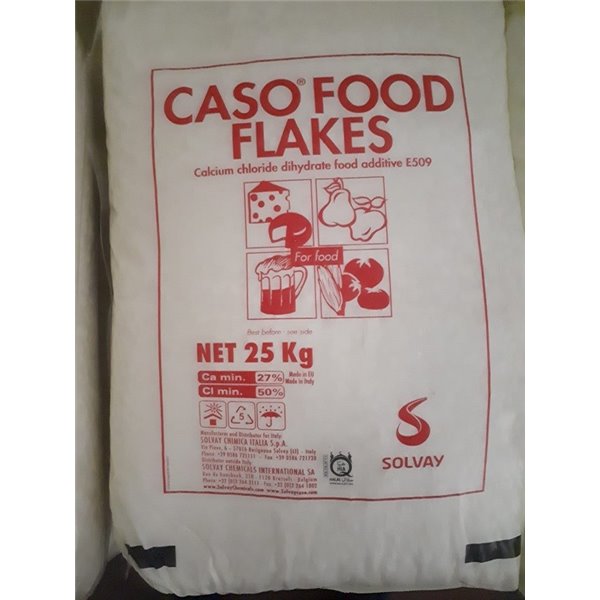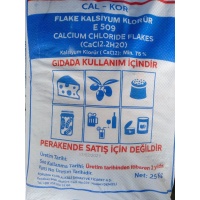CALCIUM CHLORIDE GERMAN
0.95 $
-
$ USD
CAS number: 10043-52-4, 22691-02-7 (monohydrate) 10035-04-8 (dihydrate) 25094-02-4 (tetrahydrate) 7774-34-7 (hexahydrate)
PubChem: 24854
ChemSpider: 23237
UNII: OFM21057LP
EC number: 233-140-8
DrugBank: DB01164
Chebi: 3312
CHEMBL1200668
RTECS number: EV9800000
ATC code: A12AA07, B05XA07, G04BA03
Molecular formula: CaCl2
Molar mass: 110.98 g / mol (anhydrous) 128,999 g / mol (monohydrate) 147,014 g / mol (dihydrate) 183,045 g / mol (tetrahydrate) 219,08 g / mol (hexahydrate)
Appearance: White powder
Density: 2.15 g / cm 3 (anhydrous) 1.835 g / cm 3 (dihydrate) 1.83 g / cm 3 (tetrahydrate) 1.71 g / cm 3 (hexahydrate)
Melting point: 772 ° C (anhydrous) 260 ° C (monohydrate) 176 ° C (dihydrate) 45.5 ° C (tetrahydrate) 30 ° C (hexahydrate) [1]
Boiling point: 1935 ° C (anhydrous)
Solubility in water: 74.5 g / 100 ml (20 ° C) 59.5 g / 100 mL (0 ° C)
Solubility: soluble in acetone, acetic acid
Acid (pKa): 8-9 (anhydrous) 6,5-8,0 (hexahydrate)
Refractive index (nD): 1.52
General Information
Chemical formula of CaCl 2 is the salt form of calcium and chlorine. Hygroscopic is an ionic chemical that is solid at room temperature and should be kept in anhydrous calcium chloride, air-tight containers due to its hygroscopic structure. The solubility of water is exothermic. Low freezing point and high usage area are widespread. Soluble in water and alcohol. Serves as source of calcium ion in solution. It causes precipitation due to insoluble calcium compounds.
Molecular Structure
Ca 2 Cl -1 ---> CaCl2
Production and Reactions
Calcium chloride can be produced directly from limestone. Another production path can be obtained as a high by-product by the solvent method.
Usage areas
Construction-Building
It is used as a dust catcher in constructions due to its moisture-absorbing property.
food
In this sector, it is used as an additive in canned foods, milk and cheese products, as an enzyme in the beer sector, as a freezer in the freezing sector and as an additive in animal feed.
Agriculture
In the agricultural sector, it is used to reduce the calcium deficiency of plants, to decrease the sodium level in the soil and to extend the shelf life of the products.
Chemistry
In the chemical industry, calcium chloride is used in the drying (removal of water) of many organic compounds, such as saturated olefylic and aromatic hydrocarbons, alkyl halides and esters, and their aqueous solutions.
Purification
While it is used to reduce the high fluoride level in drinking water, it is widely used in the treatment of waste water in industrial plants such as oil refineries and aluminum factories.
Other
It is used as an additive material in the plastics industry and fire dusts.



